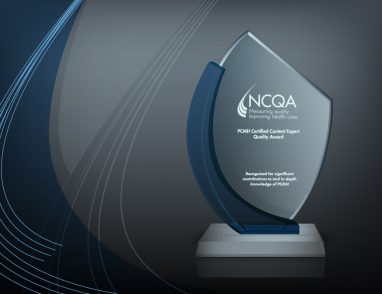The PCMH Experience: Medication Reconciliation in the Medical Neighborhood
October 2, 2019 · NCQA
The PCMH Experience series aims to improve your experience by by better informing you and sharing some tips and best-practices along the way. For this post, we’re talking Medication.
Some practices try to combine KM 14 (Medication Reconciliation) and KM 15 (Medication Lists). Let’s look first at how they differ, and why, and then we can consider the further opportunity to improve patient safety by coordinating medication reconciliation in the medical neighborhood.
Medication lists should be updated at least annually and are intended to include both prescription and nonprescription medications, over-the-counter medications and all those touted supplements—both evidenced-based and otherwise—that a patient has deemed useful to their nutrition and health (does a practice know how many of its patients use CBD oil?) or that were suggested by their clinician. The reason for these lists is therefore to be able to alert a patient if something is recalled, a recommended dose is revised or a study has discovered a new interaction. These need to be in a practice’s system in such a way that the practice can search for all patients who are currently on a specific medication and so it can determine how often it should update lists.

The denominator should be all active patients in the practice; the numerator should be all patients whose medication list was updated within the past year. For patients without any medications, a dated inquiry showing “none” can count in the numerator—but remember that “medication” in KM 15 is broadly defined and would include vitamins for a pediatric patient.
One difference between KM 14 and KM 15 is that medication reconciliation is a more defined process. While meeting the criterion does not require demonstrating the reconciliation process, an evaluator may need to delve into the practice’s process to determine that it is doing more than merely updating the medication list. Certainly, updating the list is a starting point, but KM 14 focuses on prescribed medications, with an actual review of dosage, frequency and interactions. This criterion also focuses on the need for a review following a care transition: The patient’s list may have been updated recently, but a transition from another source of care initiates a new need.
Many may recall that the expectation for tracking in the practice’s EHR was initiated during the Meaningful Use era. The importance of this activity to patient safety is unquestioned. But can more be done in the medical neighborhood to coordinate on the accuracy of the patient’s medication list? The PCMH FAQs include a link to a resource: a MATCH—Medications At Transitions and Clinical Handoffs—toolkit. (You can also search for MATCH “Toolkit” at http://www.nmh.org, a project sponsor.) While oriented to inpatient settings, MATCH has a good process for conducting patient interviews on compliance and barriers during reconciliation. Development of this tool came from the realization that even within the same four walls, different clinical teams can end up with different lists of medications for the same patient. This could result in unintentional discontinuation of needed medications post-discharge, readmissions and increased risks to patient safety.
MATCH promotes a consistent practice for documentation of changes, roles and responsibilities, resulting in the goal of “One Source of Truth,” a single list. It also suggests the patient’s primary care practice as a source of current medications, especially for patients, families and caregivers who are unable to provide accurate prescription details. MATCH requires complete reconciliation of the patient’s medication list at admission and on discharge, with changes highlighted on the discharge summary. There is an opportunity here to investigate if the facilities from which a practice’s patients transition follow these guidelines, or if the practice reviews discharge summaries stating, for example, “resume home meds?” Similar communication opportunities exist when a primary care practice forms agreements with specialty practices.
The patient, too, can be part of coordinated communication. Studies show that 40%–80% of the information patients receive during an encounter is forgotten immediately and 50% of the information patients retain is incorrect. Patient medication education can include advising the patient to carry a list and update it when necessary.  Such a list would include the full name of the medication, its strength, when and how it is taken and patient medication allergies. Practices can help patients with the list’s format and help them understand its importance.
Such a list would include the full name of the medication, its strength, when and how it is taken and patient medication allergies. Practices can help patients with the list’s format and help them understand its importance.
The Joint Commission supports an initiative to encourage patients to “Speak Up” when medications are being reviewed and possibly changed, to set up the opportunity to address the changes and the reason for them. This ties in with health literacy. The need for tools such as the “Teach Back” method and other means of assisting patients’ level of understanding may require more targeted effort by the primary care practice, but offers great rewards in improving patient safety and outcomes.
Are your practices really conducting medication reconciliation as intended?
- Do patients have the opportunity to give feedback on their understanding of their medication’s risks and purpose?
- Do the inpatient facilities where the majority of your patients are admitted manage patient medication information consistently?
- A PCMH succeeds with continuous quality improvement and a focus on the Triple Aim. Medication reconciliation in the medical neighborhood is another area of such opportunity.







